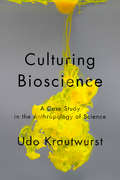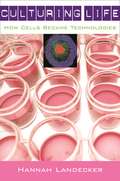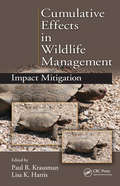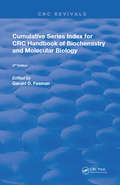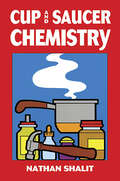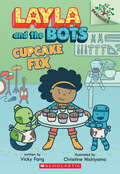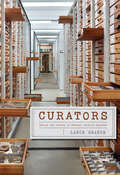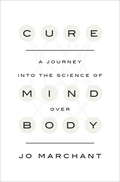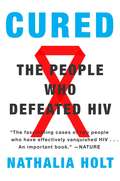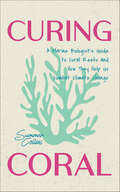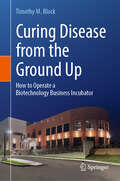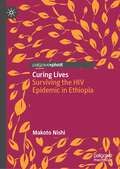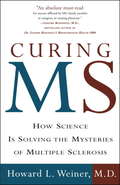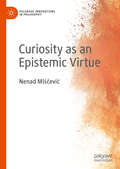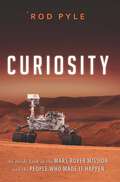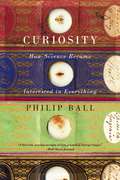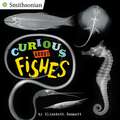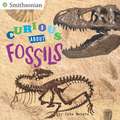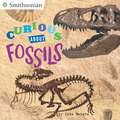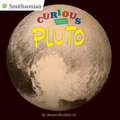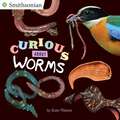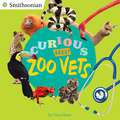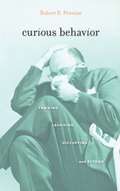- Table View
- List View
Culturing Bioscience: A Case Study In The Anthropology Of Science (Teaching Culture: Utp Ethnographies For The Classroom Ser.)
by Udo KrautwurstCharting the rise and fall of an experimental biomedical facility at a North American university, Culturing Bioscience offers a fascinating glimpse into scientific culture and the social and political context in which that culture operates. Krautwurst nests the discussion of scientific culture within a series of levels from the lab to the global political economy. In the process he explores a number of topics, including: the social impact of technology; researchers' relationships with sophisticated equipment; what scientists actually do in a laboratory; what role science plays in the contemporary university; and the way bioscience interacts with local, regional, and global governments. The result is a rich case study that illustrates a host of contemporary issues in the social study of science.
Culturing Life: How Cells Became Technologies
by Hannah LandeckerHow did cells make the journey, one we take so much for granted, from their origin in living bodies to something that can be grown and manipulated on artificial media in the laboratory, a substantial biomass living outside a human body, plant, or animal? This is the question at the heart of Hannah Landecker's book. She shows how cell culture changed the way we think about such central questions of the human condition as individuality, hybridity, and even immortality and asks what it means that we can remove cells from the spatial and temporal constraints of the body and "harness them to human intention." Rather than focus on single discrete biotechnologies and their stories--embryonic stem cells, transgenic animals--Landecker documents and explores the wider genre of technique behind artificial forms of cellular life. She traces the lab culture common to all those stories, asking where it came from and what it means to our understanding of life, technology, and the increasingly blurry boundary between them. The technical culture of cells has transformed the meaning of the term "biological," as life becomes disembodied, distributed widely in space and time. Once we have a more specific grasp on how altering biology changes what it is to be biological, Landecker argues, we may be more prepared to answer the social questions that biotechnology is raising.
Cumulative Effects in Wildlife Management: Impact Mitigation
by Paul R. Krausman Lisa K. HarrisAs humans continue to encroach on wildlands, quality and quantity of wildlife habitat decreases before our eyes. A housing development here, a shopping mall there, a few more trees cut here, another road put in there, each of these diminishes available habitat. Unless the cumulative effects of multiple simultaneous development projects are recogniz
Cumulative Series Index for CRC Handbook of Biochemistry and Molecular Biology: 3rd Edition (Routledge Revivals)
by Gerald D. FasmanFirst Published in 1977, this book serves as a directory for the handbook of biochemistry and molecular biology.
Cup and Saucer Chemistry (Dover Children's Science Books)
by Nathan ShalitWritten by an award-winning author of science books for children, this engrossing book enables youngsters (ages 7 to 13) to do 38 safe experiments at home or in the classroom with such common items as a teaspoon and saucer, paper towels, aspirin, baking powder, plastic straws, vinegar, and rubbing alcohol.The language of the text is clear enough for grade-school children yet is consistently (and technically) accurate and informative. Directions for simple experiments describe how to write "invisible messages" with home-made phenolphthalein, how to clean pennies with salt and vinegar, how to break aspirin into its components and how to perform a variety of other experiments involving carbonates and acids, precipitates, crystals, emulsions, catalysts, hydrogen, copper plating, chemical indicators, color flame tests, and much more.Easy-to-follow instructions, accompanied by abundant and clearly detailed illustrations, distinguish a book which not only provides children with fun-filled scientific challenges, but also serves as a valuable aid to parents, teachers, and other adults working with youngsters interested in science.
Cupcake Fix: A Branches Book (Layla and the Bots #3)
by Vicky FangLayla and the Bots are building a SWEET new invention!Pick a book. Grow a Reader!This series is part of Scholastic's early chapter book line Branches, aimed at newly independent readers. With easy-to-read text, high-interest content, fast-paced plots, and illustrations on every page, these books will boost reading confidence and stamina. Branches books help readers grow!Blossom Valley is opening a new community center! But they need to generate buzz for the grand opening. Layla and the Bots know how to help: they will build a cupcake machine for the party! But will their invention be a piece of cake... or a recipe for disaster? With full-color artwork on every page, speech bubbles throughout, and a fun DIY activity that readers can try at home, this early chapter book series brings kid-friendly STEAM topics to young readers!
Curators: Behind the Scenes of Natural History Museums
by Lance GrandeOver the centuries, natural history museums have evolved from being little more than musty repositories of stuffed animals and pinned bugs, to being crucial generators of new scientific knowledge. They have also become vibrant educational centers, full of engaging exhibits that share those discoveries with students and an enthusiastic general public. At the heart of it all from the very start have been curators. Yet after three decades as a natural history curator, Lance Grande found that he still had to explain to people what he does. This book is the answer—and, oh, what an answer it is: lively, exciting, up-to-date, it offers a portrait of curators and their research like none we’ve seen, one that conveys the intellectual excitement and the educational and social value of curation. Grande uses the personal story of his own career—most of it spent at Chicago’s storied Field Museum—to structure his account as he explores the value of research and collections, the importance of public engagement, changing ecological and ethical considerations, and the impact of rapidly improving technology. Throughout, we are guided by Grande’s keen sense of mission, of a job where the why is always as important as the what. This beautifully written and richly illustrated book is a clear-eyed but loving account of natural history museums, their curators, and their ever-expanding roles in the twenty-first century.
Cure
by Jo Marchant<P>A rigorous, skeptical, deeply reported look at the new science behind the mind's extraordinary ability to heal the body. <P>Have you ever felt a surge of adrenaline after narrowly avoiding an accident? Salivated at the sight (or thought) of a sour lemon? Felt turned on just from hearing your partner's voice? If so, then you've experienced how dramatically the workings of your mind can affect your body. <P>Yet while we accept that stress or anxiety can damage our health, the idea of "healing thoughts" was long ago hijacked by New Age gurus and spiritual healers. Recently, however, serious scientists from a range of fields have been uncovering evidence that our thoughts, emotions, and beliefs can ease pain, heal wounds, fend off infection and heart disease, even slow the progression of AIDS and some cancers. <P>In Cure, award-winning science writer Jo Marchant travels the world to meet the physicians, patients, and researchers on the cutting edge of this new world of medicine. We learn how meditation protects against depression and dementia, how social connections increase life expectancy, and how patients who feel cared for recover from surgery faster. <P>We meet Iraq war veterans who are using a virtual arctic world to treat their burns and children whose ADHD is kept under control with half the normal dose of medication. We watch as a transplant patient uses the smell of lavender to calm his hostile immune system and an Olympic runner shaves vital seconds off his time through mind-power alone. <P>Drawing on the very latest research, Marchant explores the vast potential of the mind's ability to heal, acknowledges its limitations, and explains how we can make use of the findings in our own lives. <P><b>A New York Times Bestseller</b>
Cure: A Journey into the Science of Mind Over Body
by Jo MarchantA New York Times BestsellerFinalist for the Royal Society Insight Investment Science Book PrizeA rigorous, skeptical, deeply reported look at the new science behind the mind's surprising ability to heal the bodyHave you ever felt a surge of adrenaline after narrowly avoiding an accident? Salivated at the sight (or thought) of a sour lemon? Felt turned on just from hearing your partner's voice? If so, then you've experienced how dramatically the workings of your mind can affect your body. Yet while we accept that stress or anxiety can damage our health, the idea of "healing thoughts" was long ago hijacked by New Age gurus and spiritual healers. Recently, however, serious scientists from a range of fields have been uncovering evidence that our thoughts, emotions and beliefs can ease pain, heal wounds, fend off infection and heart disease and even slow the progression of AIDS and some cancers. In Cure, award-winning science writer Jo Marchant travels the world to meet the physicians, patients and researchers on the cutting edge of this new world of medicine. We learn how meditation protects against depression and dementia, how social connections increase life expectancy and how patients who feel cared for recover from surgery faster. We meet Iraq war veterans who are using a virtual arctic world to treat their burns and children whose ADHD is kept under control with half the normal dose of medication. We watch as a transplant patient uses the smell of lavender to calm his hostile immune system and an Olympic runner shaves vital seconds off his time through mind-power alone. Drawing on the very latest research, Marchant explores the vast potential of the mind's ability to heal, lays out its limitations and explains how we can make use of the findings in our own lives. With clarity and compassion, Cure points the way towards a system of medicine that treats us not simply as bodies but as human beings.From the Hardcover edition.
Cured
by Nathalia HoltIs the end of HIV upon us? Award-winning research scientist and HIV fellow at the Ragon Institute, Nathalia Holt, reveals the science behind the discovery of a functional cure and what it means for the millions affected by HIV and the history of the AIDS pandemic. Two men, known in medical journals as the Berlin Patients, revealed answers to a functional cure for HIV. Their cures came twelve years apart, the first in 1996 and the second in 2008. Each received his own very different treatment in Berlin, Germany, and each result spurred a new field of investigation, fueling innovative lines of research and sparking hope for the thirty-four million people currently infected with HIV. For the first time, Nathalia Holt, who has participated in some of the most fruitful research in the field, tells the story of how we came to arrive at this astounding and controversial turning point. Holt explores the two men’s stories on a personal level, looking at how their experiences have influenced HIV researchers worldwide#151;including one very special young family doctor who took the time to look closely at his patients#151;and how they responded to their medications. Based on extensive interviews with the patients and their doctors as well as her own in-depth research, this book is an unprecedented look at how scientists pursue their inquiries, the human impact their research has, and what is and is not working in the relationship between Big Pharma and medical care.
Curing Coral: A Marine Biologist's Guide to Coral Reefs and How They Help Us Combat Climate Change
by Summer CollinsCuring the CoralExplore the vibrant underwater ecosystems that depend on coral reefs and learn the science behind restoring their health. Discover the diverse marine life that thrives among coral, the complex relationships within coral reef ecosystems, and the techniques scientists use, such as micro fragging and outplanting, to rejuvenate reefs. Follow engaging stories of real-life conservation efforts, from Belize&’s coral reefs to the Florida Keys. Travel alongside Summer Collins as she navigates challenges, celebrates conservation victories, and inspires communities to participate actively in protecting and revitalizing coral reefs. Inside, you&’ll find: Insight into threats like coral bleaching and climate change. Step-by-step processes for planting coral reefs. Inspirational stories showcasing youth leadership in marine biology. If you&’re passionate about marine biology, eager to participate in ocean conservation, or simply fascinated by marine life, this book shows you how you can help protect our planet&’s coral reefs.Dive in and become a coral reef hero!
Curing Disease from the Ground Up: How to Operate a Biotechnology Business Incubator
by Timothy M. BlockThis operations manual offers an accessible, step-by-step guide to launching, running, and achieving success with a life science and biotechnology business incubator. Written by the founder and President Emeritus of the Pennsylvania Biotechnology Center (PABC), one of the most successful biotech and drug discovery incubators in the United States, it is designed to introduce researchers and funders to the broad considerations and minute details of managing an incubation program.As of 2023, there are more than 1100 business incubators in the United States alone, and more than 5000 worldwide. One of the fastest-growing industries of the "new economy," science business incubators are a tool for regional economic stimulation and commercial development for universities and research organizations. The PABC was founded in 2006 as a state-of-the-art research facility; its purpose and operation is unusual and its success has been remarkable. It was created by the nonprofit Hepatitis BFoundation and its research arm, the Baruch S. Blumberg Institute, to help their effort to find a cure for hepatitis B. But it has proved to be more than a source of funding for those nonprofits – it has become a major economic driver for its region and Pennsylvania, creating thousands of jobs and bringing in billions of dollars to the local economy. The PABC’s model has drawn attention from economists, legislators, and the research community. The strategy of bringing nonprofit research organizations and biotech startups under one roof was a founding principle, and has created powerful, lasting collaborations between scientific innovators, entrepreneurs and investors. The partnerships forged at the PABC have led to the discovery, testing, and FDA approval of new drugs for cancer and gastrointestinal diseases and medical devices, as well as multiple multimillion-dollar IPOs, and thousands of jobs. There are currently more than 50 startups housed in the Center's offices, ranging in focusfrom pharmaceuticals and diagnostics, to medical wearables and nanomedicine research.Curing Disease from the Ground Up: How to Operate a Biotechnology Business Incubator tells both a personal story about the ups and downs of leveraging a business incubator to fund and find a cure for a deadly disease, as well as providing a practical guide to running a business incubator. It is a first-hand, expert perspective for running a science business incubator, and explains how the success of the PABC can be learned and replicated. Whether it is developing a mission-focused framework, the practicalities of managing a scalable, business-savvy research nonprofit, identifying ideal tenant partners, or planning for the infrastructure needs of a large research facility, this manual is the first and last stop for entrepreneurial thinkers in this field.
Curing Lives: Surviving the HIV Epidemic in Ethiopia
by Makoto NishiThis is a book about life during the HIV epidemic in Ethiopia, and seeks to understand how and why the global effort to achieve universal HIV treatment has shifted away from its initial focus on the excessive human suffering precipitated by the epidemic. When antiretroviral drugs became available in Ethiopia, they emerged as powerful agents of change: not only did they cure individuals, they also helped people overcome their fear of – and break the silence around – AIDS, while healing the social ruptures caused by the epidemic. Nevertheless, as this book argues, the very same agents have silently “reversed” these changes over the course of the past decade. These reversals have dissolved connections, re-incurred invisible social fissures, and allowed a large majority of people to stay indifferent to the suffering of individuals whose lives remain vulnerable under the current treatment regime. This whole process is a product of neoliberal global health interventions that determine which lives are worthy or unworthy of investment. This book will interest scholars of biopolitics and public health, those who study the developing world, and those interested in how pandemic interventions alter the lives of many.
Curing MS: How Science Is Solving the Mysteries of Multiple Sclerosis
by Howard L. WeinerWhat causes multiple sclerosis? When will there be a cure? Dr. Howard Weiner has spent nearly three decades trying to find answers to the mysteries of multiple sclerosis, an utterly confounding and debilitating disease that afflicts almost half a million Americans. Curing MS is his moving, personal account of the long-term scientific quest to pinpoint the origins of the disease and to find a breakthrough treatment for its victims. Dr. Weiner has been at the cutting edge of MS research and drug development, and he describes in clear and illuminating detail the science behind the symptoms and how new drugs may hold the key to "taming the monster." From the "Twenty-one Points" of MS--a concise breakdown of the knowns and unknowns of the disease--to stories from the frontlines of laboratories and hospitals, Curing MS offers a message of hope about new treatments and makes a powerful argument that a cure can--and will--be found.
Curiosity (Science Textbook) class 6 - NCERT-25
by National Council of Educational Research and TrainingCuriosity: Textbook of Science for Grade 6 is a thoughtfully designed book developed in alignment with the National Education Policy 2020 and the National Curriculum Framework for School Education 2023. It adopts an integrated and experiential approach to science education, aiming to ignite curiosity, promote critical thinking, and deepen understanding through real-life connections. The textbook covers a broad spectrum of topics in biology, chemistry, physics, and earth science while interweaving themes like environmental awareness, health, value education, and Indian Knowledge Systems. With twelve engaging chapters, it emphasizes hands-on activities, observations, group discussions, and inquiry-based learning to enhance scientific temper. Each chapter begins with relatable stories, includes reflective exercises, keywords, summaries, and encourages students to question, explore, and learn collaboratively. It supports diverse learning styles through QR codes linking to interactive content and promotes peer learning and community engagement through project-based tasks. The book also fosters awareness on critical issues like biodiversity, water conservation, and food security. With tools such as “Let us enhance our learning” and “Learning further,” the textbook creates a bridge from classroom knowledge to real-world application. Ultimately, Curiosity seeks to empower learners to become thoughtful, responsible citizens with a lifelong passion for science and discovery.
Curiosity as an Epistemic Virtue (Palgrave Innovations in Philosophy)
by Nenad MiščevićThis book explores curiosity from a normative epistemological viewpoint. Taking into account recent developments in the psychology of curiosity, as well as research on the nature and motivation of scientific inquiry, Miščević identifies curiosity as a positive and vital character trait. Key topics covered include: · Curiosity as a subject in the history of philosophy · Curiosity as a possible ethical virtue · The importance of curiosity about oneself · Whether curiosity is good in itself or only as a means to an end (e.g. in the pursuit of truth). The book begins with a brief historical overview, before turning to the nature of curiosity from both a psychological and philosophical viewpoint. Curiosity is revealed as a crucial instrument in the advancement of science and wisdom, as well as within the wider picture of meaningful human life. Miščević skilfully defends the idea that curiosity motivates and organises our cognitive abilities, playing the central role in our cognitive lives.
Curiosity: An Inside Look at the Mars Rover Mission and the People Who Made It Happen
by Rod PyleThe story of the people who designed, built, launched, landed, and are now operating the Mars rover Curiosity Award-winning science writer Rod Pyle provides a behind-the-scenes look into the recent space mission to Mars of Curiosity—the unmanned rover that is now providing researchers with unprecedented information about the red planet. Pyle follows the team of dedicated scientists whose job it is to explore new vistas on Mars. Readers will also join Curiosity, the most advanced machine ever sent to another planet, on its journey of discovery. Drawing on his contacts at NASA and the Jet Propulsion Laboratory, the author provides stunning insights into how this enthusiastic team of diverse individuals uses a revolutionary onboard laboratory of chemistry, geology, and physics instruments to unravel the profound secrets of the Red Planet. Readers will meet: Robert Manning, chief engineer for every rover mission since Pathfinder; John Grotzinger, the chief scientist of the entire mission; Vandi Tompkins, the software designer who keeps the rover on track; Bobak Ferdowsi, famed "Mohawk Guy" from Mission Control; Adam Steltzner, the Elvis-like Entry, Descent and Landing Lead; Al Chen, chief of flight dynamics and the voice of JPL during Curiosity's treacherous landing; and many others. And of course, Pyle describes the adventures of the Curiosity rover itself, from landing through the first samples, drilling, and discovering a habitable past on the planet, to reaching the ultimate target: Mount Sharp, in the center of Gale Crater. America is once again at the forefront of a new space age and Curiosity is just the beginning of many exciting new discoveries to come.
Curiosity: How Science Became Interested in Everything
by Philip BallWith the recent landing of the Mars rover Curiosity, it seems safe to assume that the idea of being curious is alive and well in modern science—that it’s not merely encouraged but is seen as an essential component of the scientific mission. Yet there was a time when curiosity was condemned. Neither Pandora nor Eve could resist the dangerous allure of unanswered questions, and all knowledge wasn’t equal—for millennia it was believed that there were some things we should not try to know. In the late sixteenth century this attitude began to change dramatically, and in Curiosity:How Science Became Interested in Everything, Philip Ball investigates how curiosity first became sanctioned—when it changed from a vice to a virtue and how it became permissible to ask any and every question about the world. Looking closely at the sixteenth through eighteenth centuries, Ball vividly brings to life the age when modern science began, a time that spans the lives of Galileo and Isaac Newton. In this entertaining and illuminating account of the rise of science as we know it, Ball tells of scientists both legendary and lesser known, from Copernicus and Kepler to Robert Boyle, as well as the inventions and technologies that were inspired by curiosity itself, such as the telescope and the microscope. The so-called Scientific Revolution is often told as a story of great geniuses illuminating the world with flashes of inspiration. But Curiosity reveals a more complex story, in which the liberation—and subsequent taming—of curiosity was linked to magic, religion, literature, travel, trade, and empire. Ball also asks what has become of curiosity today: how it functions in science, how it is spun and packaged for consumption, how well it is being sustained, and how the changing shape of science influences the kinds of questions it may continue to ask. Though proverbial wisdom tell us that it was through curiosity that our innocence was lost, that has not deterred us. Instead, it has been completely the contrary: today we spend vast sums trying to reconstruct the first instants of creation in particle accelerators, out of a pure desire to know. Ball refuses to let us take this desire for granted, and this book is a perfect homage to such an inquisitive attitude.
Curious About Fishes (Smithsonian)
by Elizabeth BennettDive into the Exciting World of Fishes!Sharks, skates, shrimp, seahorses, and 30,000 other fishes swim through the world’s waterways. With that much variety, you just have to ask: what makes a fish a fish? This book helps answer the question! Filled with amazing X-rays, full-color photographs, and lively text, Curious About Fishes looks at underwater creatures inside and out. Inspired by a popular Smithsonian exhibition and the first children’s book to feature these extraordinary X-rays.
Curious About Fossils
by Kate WatersFossils explains why and where fossils form and looks at the colorful lives and important discoveries of some of the great early fossil hunters and collectors, including Mary Anning who unearthed the first ichthyosaur skeleton.
Curious About Fossils (Smithsonian)
by Kate WatersDig into this photo-packed Penguin-Smithsonian book about fossils—and find out what was going on in our world.Aren't you curious about what Earth was like long ago? What creatures lived before us? What happened to the dinosaurs?Curious about Fossils explains why and where fossils form and looks at the colorful lives and important discoveries of some of the great early fossil hunters and collectors, including Mary Anning who unearthed the first ichthyosaur skeleton; Richard Owen who coined the word dinosaur; and Barnum Brown, who discovered the first remains of a T-rex. Then the adventure continues into modern times, where scientists on fossil hunts in places like North Dakota's Hell Creek Formation use computers and other technology to dig up the fossilized bones, teeth, and even poop that provide clues to the past. A must read for every kid who's ever collected a shark tooth or trilobite!
Curious About Pluto (Smithsonian)
by James BuckleyHello, Pluto!What&’s cold, dark, far away, and has a &“heart&” one thousand miles wide? Pluto! In this highly-visual Smithsonian book, kids can check out exciting information and sensational photographs transmitted by the New Horizons spacecraft on its historic fly-by of the distant and mysterious dwarf planet.
Curious About Worms (Smithsonian)
by Kate WatersWhat's wiggling around underground . . . and underwater? Worms! They're more than just the squiggly things on a fish hook. Worms live in the earth, in the sea, in other bodies of water, and even inside insects or animals. They can be round or flat, really long or microscopic, colorful or see-through, even glowing. Learn more about how these wigglers live, what they eat . . . and who eats them.
Curious About Zoo Vets (Smithsonian)
by Gina ShawWho's Looking After the Zoo?How do you weigh a panda? Or check a sea lion's tooth? Or figure out why a llama is limping? These are just some of the many tasks veterinarians, technicians, and animal keepers at the Smithsonian’s National Zoo are trained in. With full-color photos and lively, accessible text, this new title looks at the very busy “to do” list of zoo workers as they take care of their creatures large and small.
Curious Behavior: Yawning, Laughing, Hiccupping, And Beyond
by Robert R. ProvineRobert Provine boldly goes where other scientists seldom tread-in search of hiccups, coughs, yawns, sneezes, and other lowly, undignified human behaviors. Upon investigation, these instinctive acts bear the imprint of our evolutionary origins and can be uniquely valuable tools for understanding how the human brain works and what makes us different from other species. Many activities showcased in Curious Behavior are contagious, but none surpasses yawning in this regard-just reading the word can make one succumb. Though we often take it as a sign of sleepiness or boredom, yawning holds clues to the development of our sociality and ability to empathize with others. Its inescapable transmission reminds us that we are sometimes unaware, neurologically programmed beasts of the herd. Other neglected behaviors yield similar revelations. Tickling, we learn, may be the key to programming personhood into robots. Coughing comes in musical, medical, and social varieties. Farting and belching have import for the evolution of human speech. And prenatal behavior is offered as the strangest exhibit of all, defying postnatal logic in every way. Our earthiest acts define Homo sapiens as much as language, bipedalism, tool use, and other more studied characteristics. As Provine guides us through peculiarities right under our noses, he beckons us to follow with self-experiments: tickling our own feet, keeping a log of when we laugh, and attempting to suppress yawns and sneezes. Such humble investigations provide fodder for grade school science projects as well as doctoral dissertations. Small Science can yield big rewards.
